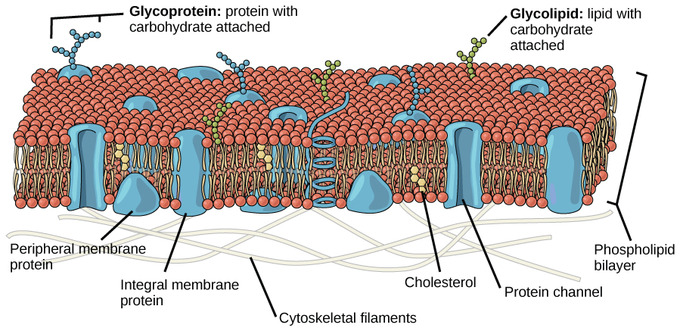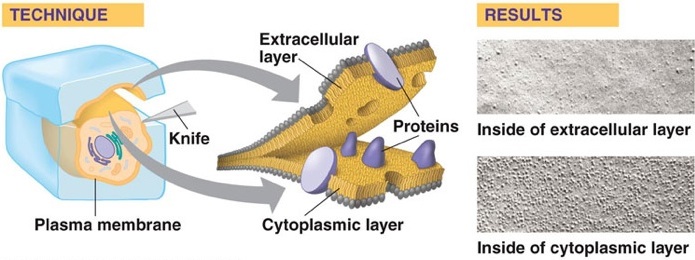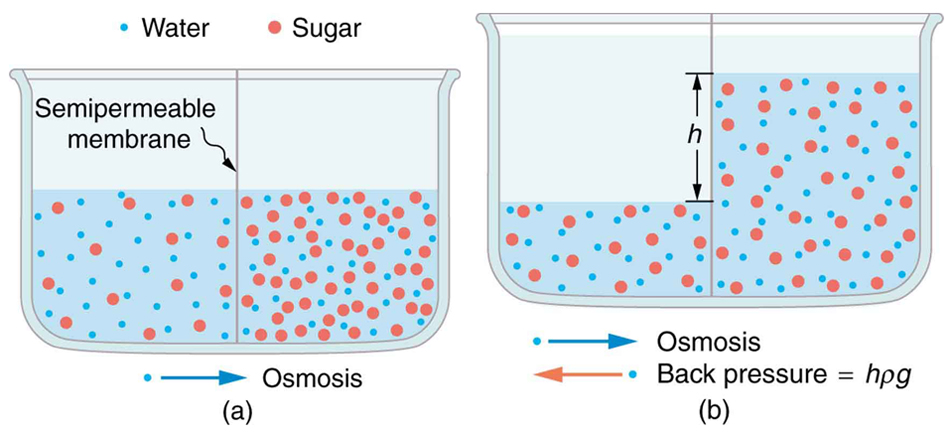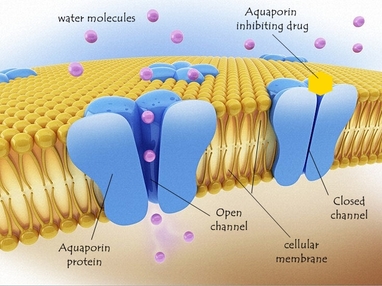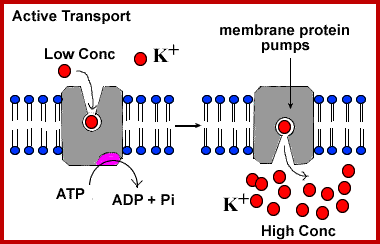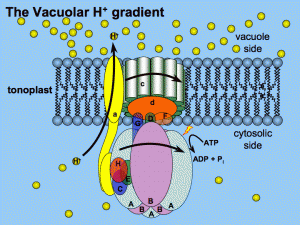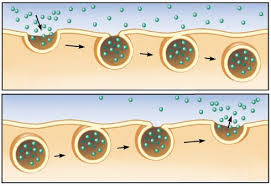The plasma membrane:Is the boundary that separates, the living cell, from its surrounding and exhibits selective permeability, allowing some substances to cross it more easily than others.
Cellular membranes are fluid mosaics of lipids and proteins
– Phospholipids are the most abundant lipid in the plasma membrane
-Phospholipids are amphipathic molecules, containing hydrophobic and hydrophilic regions.
-The fluid mosaic model states that a membrane is a fluid structure whith a “mosaic” of various proteins embedded in it.
Freeze fracture experiments
– Freeze fracture studies of the plasma membrane supported the fluid mosaic model.
– Freeze fracture is a specialized preparation technique that splits a membrane along the middle of the phosphatide bilayer.
The fluidity of membranes
– Phospholipids in the plasma membrane can move whithin the bilayer
– Most of the lipids and some proteins drift laterally.
– Rarely does a molecule flip-flop transversely across the membrane
Membrane proteins and their functions:
-Peripheral proteins are bound to the surface of the membrane
– Integral proteins penetrate the hydrophobic core
-Integral proteins that span the membrane are called transmembrane proteins.
-The hydrophobic regions of an integral proteins consist of one or more stretches of nonpolar amino acids.
Six major functions of membrane proteins:
– Transport
– Enzymatic activity
– Signal transduction
– Cell-cell recognition
– Intercellular joining
– Attachment to the cytoskeleton and extra cellular matrix
Synthesis and sidedness of membranes
– Membranes have a distinct inside and outside faces
-The asymmetrical distribution of proteins, lipids and associated carbohydrates in the plasma membrane is determined when the membrane is built by the ER and Golgi apparatus.
Membrane structure results in selective permeability
– A cell must exchange materials with its surrounding, a process controlled by the plasma membrane
– Plasma membranes are selectively permeable, regulating the cell’s molecular traffic
– Hydrophobic (nonpolar) molecules such as hydrocarbons, can dissolve in the lipid bilayer and pass through the membrane rapidly
– Polar molecules such as sugars do not cross the membrane easily
Passive transport: diffusion across a membrane with no energy investment
1)Diffusion is the tendency for molecules to speed out evenly into the available space.
2)Although each molecule moves randomly, diffusion of a population of molecules may exhibit a net movement in one direction
3) At dynamic equilibrium, as many molecules cross one way as cross in the other direction.
Effects of osmosis on water balance
1) Osmosis is the diffusions of water across a selectively permeable membrane.
2)Water diffuses across a membrane from the region of lower solute concentration to the region of higher solute concentration.
Water balance of cells without walls. Tonicity is the ability of a solution to cause a cell to gain or lose water.
Isotonic solution: solute concentration is the same as that inside the cell, no net water movement across the plasma membrane
Hypertonic solution: solute concentrations greater than that inside the cell; cell loses water
Hypotonic solution: solute concentration is less than that inside the cell; cell gains water.
Transport proteins: Transport proteins allow passage of hydrophilic substances across the membrane.
Some transport proteins, called channel proteins have a hydrophilic channel that certain molecules or ions can use as a tunnel.
Channel proteins called Aquaporin facilitate the passage of water.
Facilitated diffusion, passive transport aided by proteins, facilitated diffusion : transport proteins speed the passive movement of molecules across the plasma membrane.
Channel proteins provide corridors that allow a specific molecule or ion to cross the membrane
Channel proteins include:
Aquaporin, to facilitate diffusion of water ,Ion channels that open or close in response to a stimulus (gated channels)
Active transport uses energy to move solutes against their gradients:Facilitate diffusion is still passive because the solute moves down its concentration gradient.Some transport proteins however can move solutes against their concentration gradient.Active transport moves substances against their concentration gradient.Active transport requires energy usually in the form of ATP.Active transport is performed by specific proteins embedded in the membranes.
Ion pumps maintain membrane potential:Membrane potential is the voltage difference across a membrane. Voltage is created by differences in the distributions of positive and negative ions.
Two combined forces collectively called the electrochemical gradient, drive diffusion of ions across a membrane. A chemical force (the ion’s content ratio gradient),An electrical force (the effect of the membrane potential on the ion’s movement) An electro genic pump is a transport protein that generates voltage across a membrane. The sodium potassium pump is the major electro genic pump of animal cells.The main electro genic pump of plants, fungi and bacteria is a proton pump.µ
Bulk transport by exocytosis and endocytosis
Small molecules and water enter or leave the cell through the lipid bilayer or by transport proteins
Large molecules, such as polysaccharides and proteins, cross the membrane in bulk via vesicles.
Bulk transport requires energy.
In exocytosis transport vesicles migrate to the membrane, fuse with it and release their contents.
In endocytosis the cell takes in macromolecules by forming vesicles from the plasma membrane.
